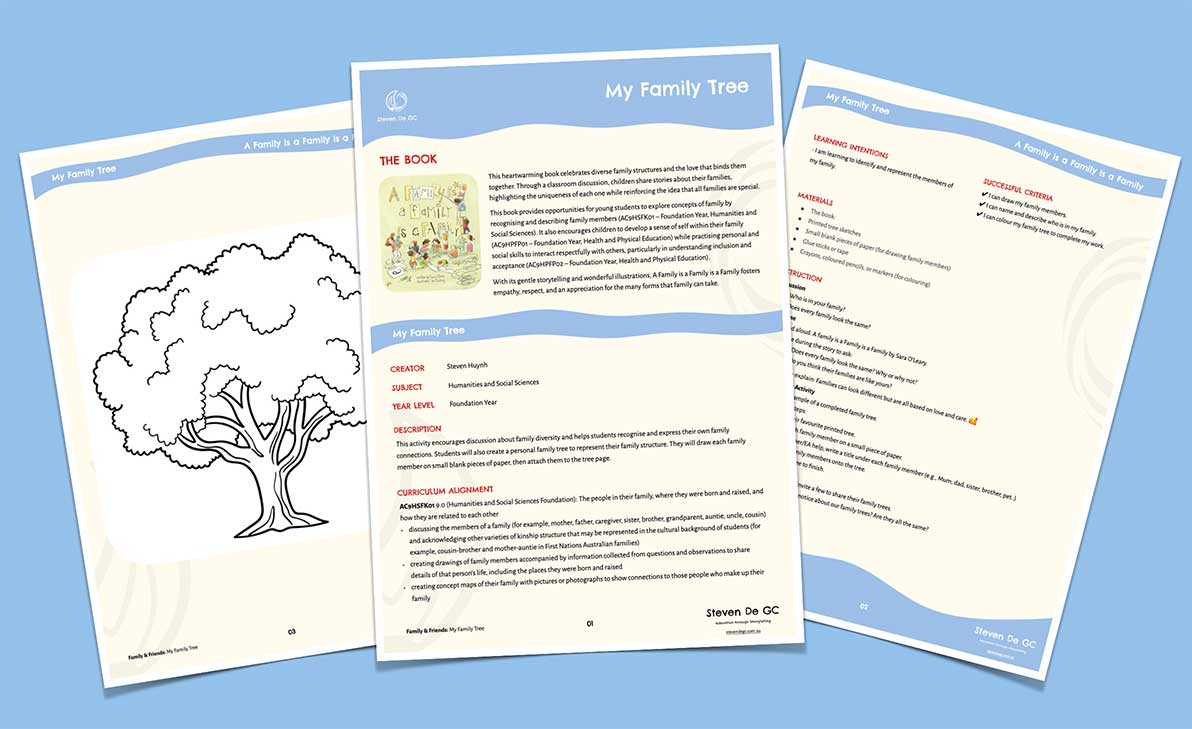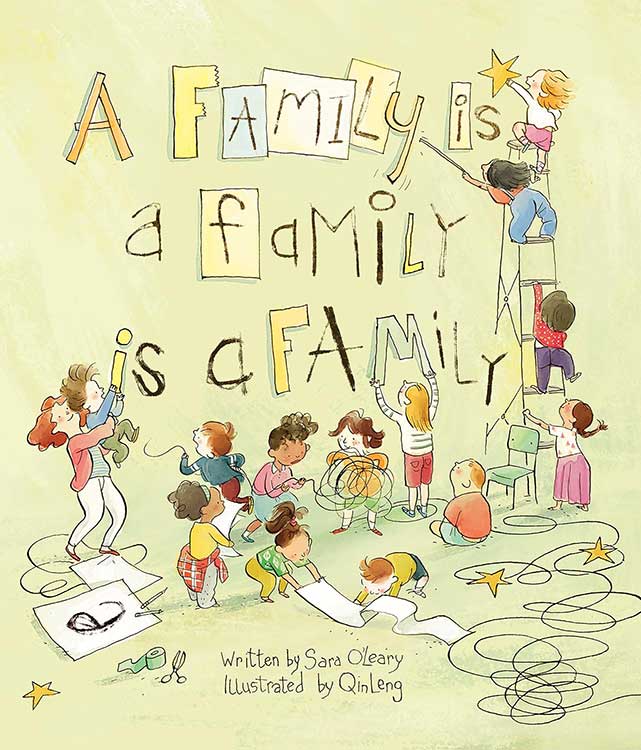$5 Off First Order + 5% Off After
Become a free registered member and get access to exclusive discounts, resources, and a community of like-minded educators.
Not sure yet? See what you’ll get: Member benefits
AC9HSFK01
》Humanities and Social Sciences – Foundation
The people in their family, where they were born and raised, and how they are related to each other
Elaborations
• discussing the members of a family (for example, mother, father, caregiver, sister, brother, grandparent, auntie, uncle, cousin) and acknowledging other varieties of kinship structure that may be represented in the cultural background of students (for example, cousin-brother and mother-auntie in First Nations Australian families)
• creating drawings of family members accompanied by information collected from questions and observations to share details of that person’s life, including the places they were born and raised
• creating concept maps of their family with pictures or photographs to show connections to those people who make up their family
-
My Family Tree
📔 A Family Is a Family Is a Family by Sara O’Leary• I am learning to identify and represent the members of my family.



![[T4R] A Family is a Family is a Family: L1 Background Knowledge](https://stevendegc.com.au/wp-content/uploads/2025/03/T4R-A-Family-is-a-Family-L1-Cover.jpg)

